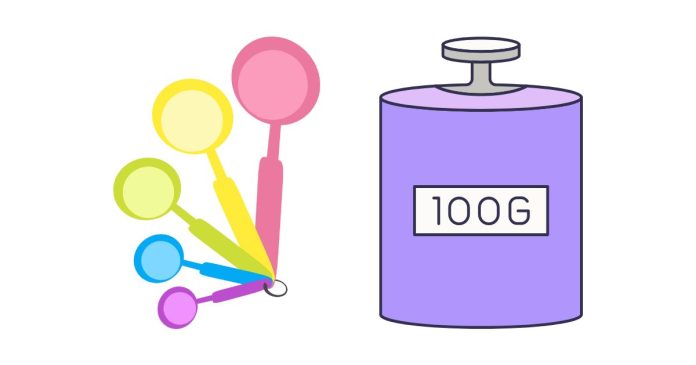Cooking and baking often require precise measurements, but if you’re following a recipe that uses grams and your measuring tools only use cups, you might find yourself wondering: How many cups is 100 grams?
In this post, we’ll dive into the answer, explore why conversions depend on the ingredient, and provide practical tips to make your cooking and baking smoother.
The Answer: It Depends on the Ingredient
The conversion from grams to cups isn’t straightforward because it depends on the density of the ingredient. For instance, 100 grams of flour will take up more volume (in cups) than 100 grams of butter or sugar because each substance has a different weight-to-volume ratio.
Common Conversions for 100 Grams:
- Flour: About 3/4 cup (100 grams of all-purpose flour = approximately 0.8 cups)
- Sugar: About 1/2 cup (100 grams of granulated sugar = approximately 0.5 cups)
- Butter: About 7 tablespoons (100 grams of butter ≈ 7 tablespoons or just under 1/2 cup)
Why Ingredient Density Matters
In recipes, grams measure weight while cups measure volume. The relationship between these two measurements varies depending on how dense the ingredient is. For example:
- Fluffy ingredients like flour take up more volume per gram.
- Dense ingredients like sugar and butter occupy less space.
Understanding this distinction ensures better results in your cooking and baking.
Tips for Accurate Conversions
- Use a Kitchen Scale: The most reliable way to measure 100 grams of any ingredient is with a digital kitchen scale. This eliminates the guesswork of volume-based conversions.
- Check Ingredient-Specific Charts: Many websites and cookbooks provide gram-to-cup conversion charts for various ingredients.
- Level Your Measurements: When measuring by volume, use a spoon to scoop the ingredient into your measuring cup and level it off with a knife for accuracy.
Why Accurate Measurements Are Crucial
In cooking, small variances in ingredient amounts are often forgiving. However, in baking, precision is critical. Too much flour or not enough butter can dramatically alter the texture, rise, and flavor of baked goods. If a recipe lists grams, it’s always best to stick to that measurement for consistent results.
The number of cups in 100 grams depends entirely on the ingredient in question. While general guidelines can help, using a kitchen scale is the easiest and most precise way to measure grams. If you’re serious about improving your culinary skills, investing in a scale will save you time and effort—and lead to better results.
Next time you encounter a recipe with gram measurements, you’ll be well-equipped to handle the conversion. Happy cooking!


